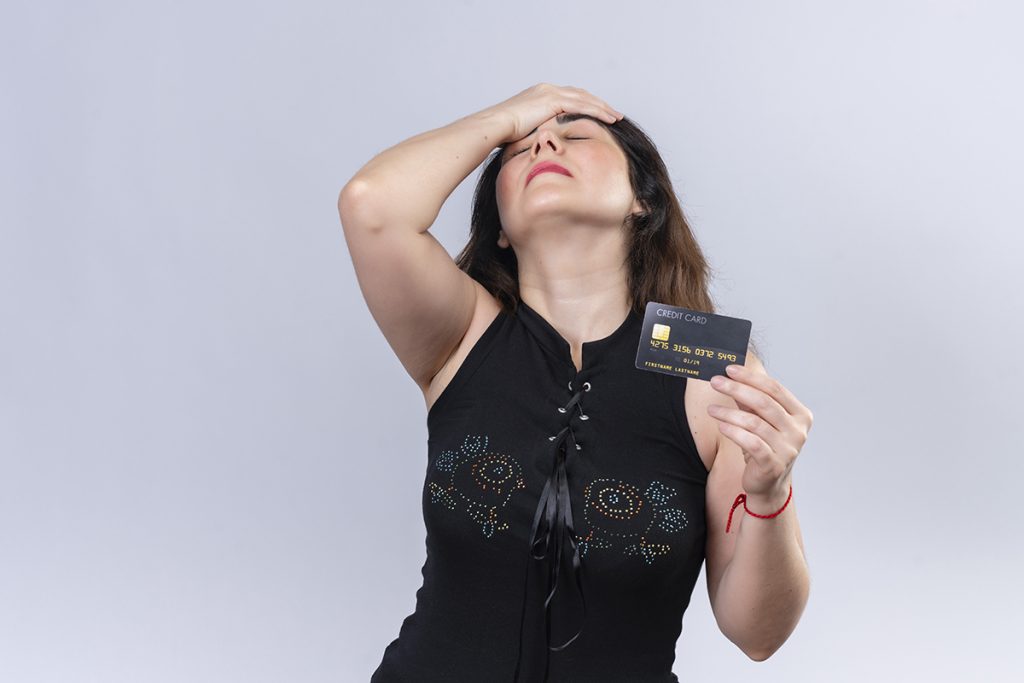Save money: spend less, save more

Being financially savvy and prudent with your earnings and expenditures is crucial in the present era, as exorbitant energy costs and pricey groceries can quickly deplete your funds.
Saving money becomes particularly effortless when you focus on non-essential items like takeaway coffees, allowing you to make substantial long-term savings by adjusting other expenses.
By following a few straightforward yet effective techniques, we can impart valuable knowledge on how to intelligently save money.
Saving money in a nutshell
- List your income and expenses
- Make lists to get a grip on your money
- Save on your energy bill
- Spend less on your daily groceries
- Be smart with your expenses for clothing, home furnishings and pets
- Save on your subscriptions and insurance
- Spend less on your transport
- Save on your vacation
- Live more consciously and sustainably
- Use useful mobile phone apps and tools to save money

Step 1: Get an overview of all of your expenses
It is difficult to save on expenses that recur every month. Since you do need to pay your rent and healthcare insurance costs. However, the extra expenses that you incur throughout the day are the fastest to cut back on.
But all these expenses can get you into trouble at the end of the month. Therefore, write down everything you spend and what you spend it on. And put it in a handy (online) housekeeping book. With the overview in hand, it is easier to budget and get a grip on your money matters.
Saving money becomes challenging when it comes to expenses that recur every month, and which are unavoidable. Such as rent and healthcare costs. On the other hand, reducing the additional expenses that arise throughout the day is the quickest way to make savings.
These additional expenses can accumulate and cause financial difficulties by the end of the month. To tackle this, it is advisable to keep a record of all your expenditures, including the details of what you spent and where.
Maintaining an accessible online budgeting tool or expense tracker can provide a comprehensive overview, making it simpler to manage your finances effectively.
What do you have to pay, and what can you pay?
So it helps if you have an overview of your obligations. What expenses do you have to pay? What expenses can you afford?
The rent or mortgage, health insurance, energy bill, insurance, repayment of student debt and the like come back every month. You’ll need groceries for food and housekeeping. And of course you do need new clothes and shoes, furniture and appliances when they are worn out or broken. Everything else, such as catering visits and sports club, a day out, are extras.
Saving money starts with making lists
It’s not that loose coffee-to-go that makes your money go away so quickly. It’s all those small, separate expenses added up. Saving money starts with making lists. It helps if you see how much you spend each month on lunch, your cup of coffee on the road or eating out. But it is also useful to see how much a special day trip has cost together. It’s probably more than you think.
The rapid depletion of your funds doesn’t solely result from occasional purchases like a coffee-to-go. It’s the cumulative effect of numerous small expenses that adds up quickly. To begin saving money, it is essential to create lists.
Since these lists allow you to gain visibility into your monthly expenditures, such as lunches, coffee purchases while on the go, or dining out. Additionally, it proves helpful to assess the total cost of special day trips, which often turn out to be higher than anticipated.

Step 2: Get a grip on your money
Make lists of the things you’ll really need in the coming month. And give yourself a budget of how much you can spend per week. If you go to the supermarket for dinner: same story. Make a shopping list. Because if you do go to the supermarket without a list, then you fill up the shopping basket much more.
Decide how much you can spend — let’s say, $75 for new clothes and $100 for going out — and track your spending. This prevents sudden expenses that you might regret later.
Prepare lists of the essential items you’ll truly need in the upcoming month, and establish a weekly spending limit for yourself. When you visit the supermarket for dinner, the same principle applies: create a shopping list. Without a list, you tend to fill your shopping basket with unnecessary items.
Additionally, determine specific budget allocations for different categories, such as $75 for new clothes and $100 for entertainment expenses. Keep a close track of your spending to avoid impulsive purchases that you might later regret. This practice helps to prevent unexpected expenses from arising.
Borrowing money comes with additional expenses. Instead, save money in advance for expenses that bring you joy. Avoid purchasing items through installment plans, ‘buy-now-pay-later’ options, or loans, particularly if you are borrowing because you currently lack the necessary funds. Escaping debt becomes significantly more challenging once you find yourself in it.
It is important to establish a financial cushion for unforeseen expenses. Utilize an online buffer calculator to determine the appropriate amount to set aside. Adhere to your budget and review it at the end of each month. Have any unexpected costs been incurred?
Have you spent more money on clothes?
See what you’ll have left over after steps 1 to 5 and put it aside in a savings account. Tip: create special piggy banks for ‘eating out’ or a ‘weekend away’. In which you do put a fixed amount every month. This way you’ll save unnoticed for a nice evening or a nice weekend.

Step 3: Save on your energy bill
Sometimes you do have to spend some money first in order to save more afterwards. Due to the high energy bill, you can set the thermostat to 19 degrees Celsius or 66 degrees Fahrenheit and shower less often. However, that is not the only way to really reduce your high energy bill.
You can also insulate your home and make it more sustainable with solar panels and/or a heat pump. More and more municipalities have energy coaches who can advise and assist you with this.
Smartly heat and insulate your home and make it more sustainable
Saving energy is good for your wallet. It is very important to keep the heat inside your home and in the right place. You’ve already saved a few hundred dollars per year by smart heating and closing the connecting doors. Insulating your home starts with draft strips and installing insulation.
This way you can make your home completely sustainable. We have listed for you what you can do, what it costs and how much you save.
For example, you could lower your electricity bill by replacing energy-saving lamps with LED lamps. And big appliances are becoming more and more economical too. However, an economical washing machine with an A+++ energy label may be more expensive to purchase.

Step 4: Spend less on daily groceries
When you bring a shopping list to the store, you can experience savings in two ways. Firstly, you ensure that you only purchase the items you genuinely need. Secondly, you can reduce your annual waste by an average of approximately 9 kilograms or a little more than 19 lb (source: Nutrition Center).
Here are some extra tips to assist you in saving money: Before heading to the store, pause and evaluate the items you already have in your inventory. Additionally, consider utilizing special offers like ‘get 3, pay for 2’, but ensure that this product is genuinely something you require.
Opting for whole vegetables instead of pre-cut ones can help you save money. Additionally, fresh produce is often more affordable when purchased from the market. For example, frozen vegetables like peas tend to be cheaper than their fresh counterparts.
Another money-saving tip is to buy seasonal vegetables since they require fewer expenses for energy and transportation. Remember, you don’t have to purchase everything from your own vegetable garden; selectively growing certain items can still contribute to savings.
Step 5: Save money on clothing, home furnishings and pets
When purchasing used items, you can typically save around 30% to 40% compared to the price of new ones. By adopting a focused approach and searching for specific brands and products, you can avoid making impulsive purchases. Proper maintenance plays a crucial role in extending the lifespan of appliances. Descaling your kettle, for example, will result in faster and longer-lasting water heating, and this principle applies to all types of devices.
Instead of opting for brand-new products, you have the option to buy refurbished ones. Additionally, rather than discarding them, you can exchange or sell your gently used clothing. It’s also essential to have a financial buffer to cover unexpected costs related to your pet.

Step 6: Smart use of subscriptions and insurance
All expenses associated with your phone, internet connection, and streaming subscriptions can accumulate rapidly. To avoid being stuck with an unnecessary service for an extended period, it’s wise to mark the end date or cancellation period of your subscription on your calendar.
A considerable number of individuals are often unaware of the insurance policies they have and the coverage they provide. This lack of knowledge can lead to potential overinsurance. It’s essential to evaluate whether you truly require all the insurance policies you hold. Additionally, consolidating your insurance policies into a single package often proves to be more cost-effective.
It is advisable to carefully review your health insurance plan each year. Are the deductible amounts still appropriate? What expenses can you anticipate? Which reimbursements are covered by your supplementary insurance? Will the costs be fully covered?
Once you reach the age of 18, you become responsible for various financial matters, including your health insurance and healthcare allowance. However, for other insurance policies like liability and travel insurance, you may still be covered under your parents’ policy. It is important to verify this to avoid any unexpected surprises. It is advisable to carefully review your health insurance plan each year. Are the deductible amounts still appropriate? What expenses can you anticipate? Which reimbursements are covered by your supplementary insurance? Will the costs be fully covered?
Once you reach the age of 18, you become responsible for various financial matters, including your health insurance and healthcare allowance. However, for other insurance policies like liability and travel insurance, you may still be covered under your parents’ policy. It is important to verify this to avoid any unexpected surprises.
Step 7: Spend less on your public transport, car or scooter
According to experts, you can expect to spend a minimum of $350 per month for a car, excluding parking costs. If you drive less than 10,000 km or around 6,200 miles per year, opting for a shared car can be a viable alternative. Even if you can’t completely live without a car, there are ways to save on expenses.
For example, opting for a second-hand car is more cost-effective than purchasing a new one due to higher depreciation costs. And practicing fuel-efficient driving techniques can result in savings of up to 10% on your fuel expenses.
Regular maintenance is crucial as well, as delaying it can lead to higher repair costs in the long term. Use the air conditioner sparingly in a car, only when necessary. Depending on your location, consider using your bicycle more frequently and explore opportunities to work from home whenever possible.

Bonus: 3 additional smart money savings tips
If you’re on a tight budget, a simple tip is to follow the halving principle. Use half the recommended amount of detergent, half a dish block in the dishwasher, and the same approach with toothpaste, shampoo, and other similar products. This way, you can make your supplies last longer.
Saving money often requires making choices, which may involve sacrificing enjoyable activities such as outings or sports. If you’re unable to afford the membership fee for a sports club or money for your child’s music lessons, there is usually a fund available to assist with covering these expenses, including the membership fee and sports attire.
Exercise caution when buying items on credit. It ends up costing you more due to interest payments, and it can lead to long-term financial commitments. This can increase the likelihood of encountering payment difficulties.



















